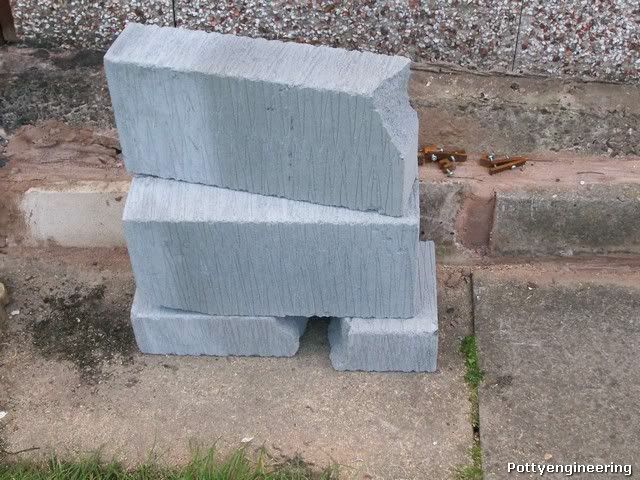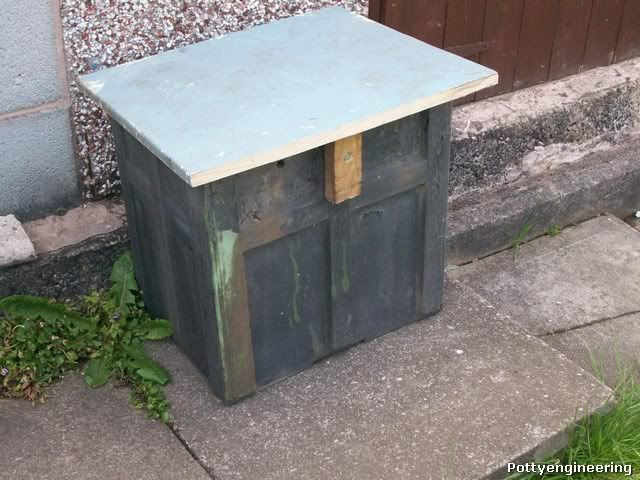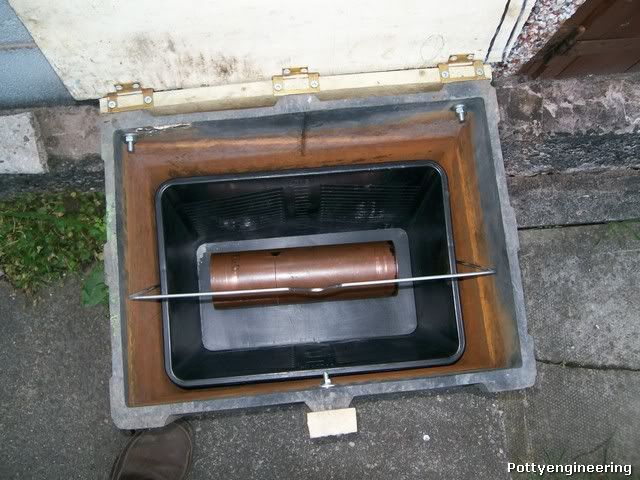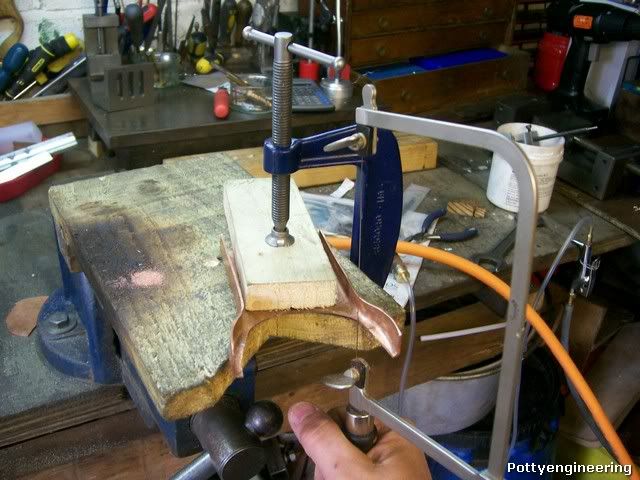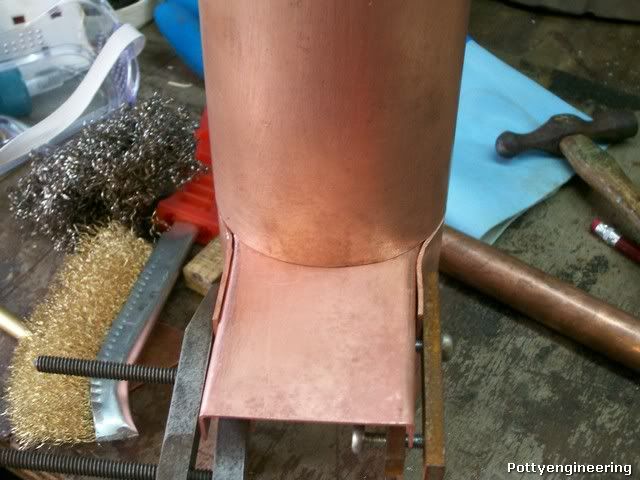Ho I wish I new about the citric acid 12 months ago thats when I bought the acid crystals, as I've got them I'll use them, but for any future builds I'll go the citric acid way it makes a lot of sense a lot safer and environmentally friendly.
Great looking boiler Lordedmond if only my boiler will look half as good.
Bill thanks for your good wishes:- I'll be using silver solder and propane gas, guys at the club have built boilers of similar size using propane. It will be for a 3 1/2" 2-4-0 locomotive to the Mabel design by LBSC.
Went on the hunt to B&Q (great big hardware store) for some Thermalite blocks and picked up four half price 50p each as they were damaged, but for my use as a hearth that won't matter.
This afternoon I've made a lid for the tank
Still got to put a lock on it just to keep the contents safe away from animals and children
I spotted an oblong bucket at B&Q for keeping paint in for roller application looked just the right size to fit in the tank and take the boiler.
The acid will be in the bucket and the tank will act as a second skin containing accidental leaks and splashes.
Thanks to you all again for your support and interest
Stew








